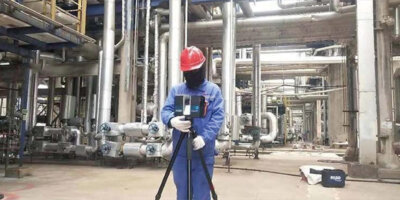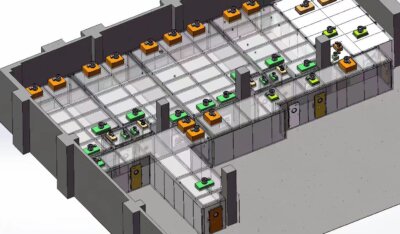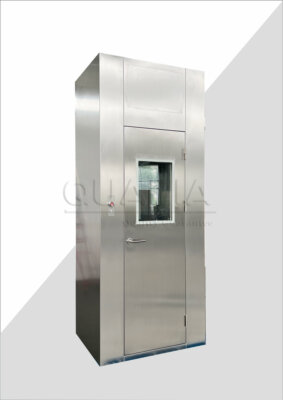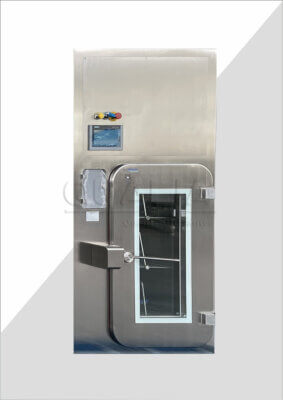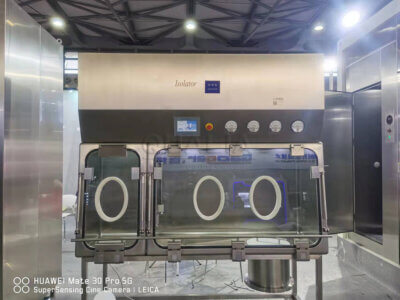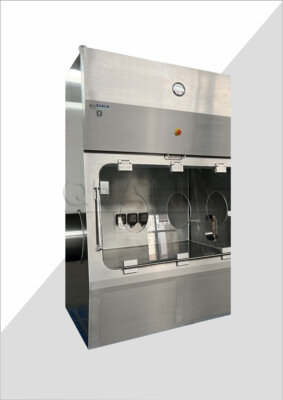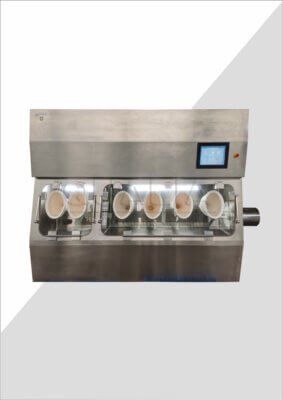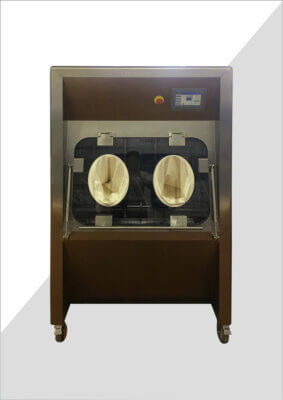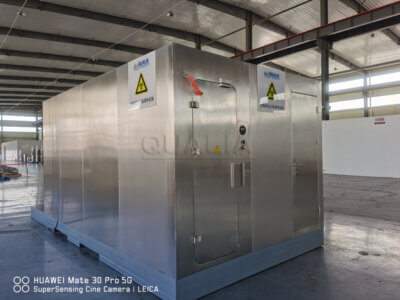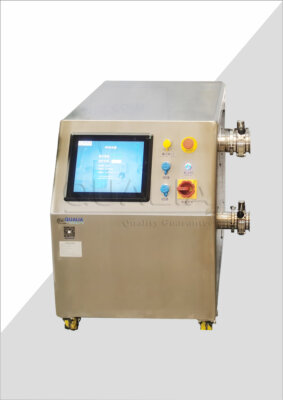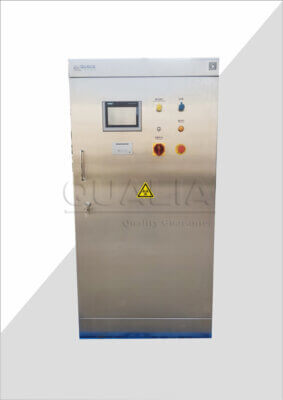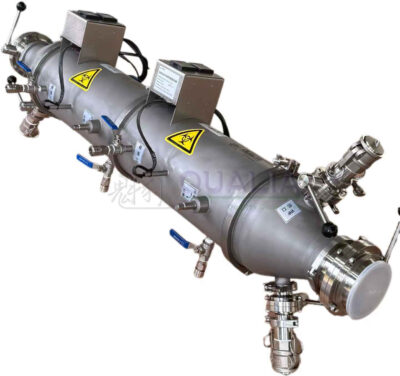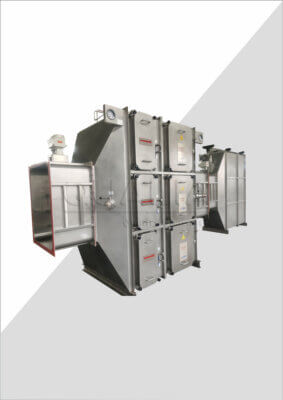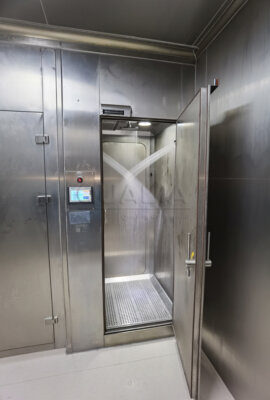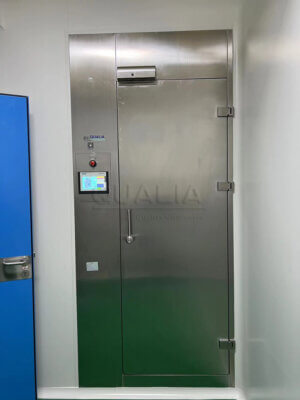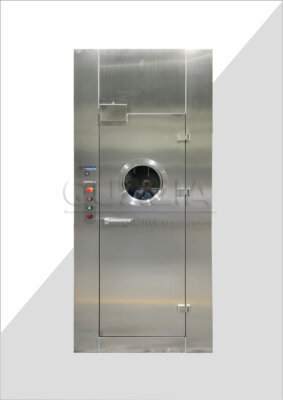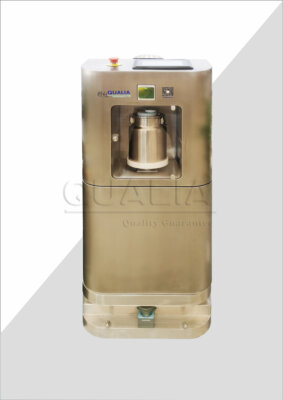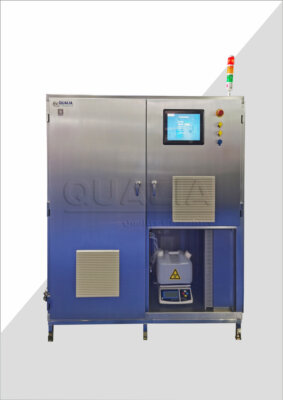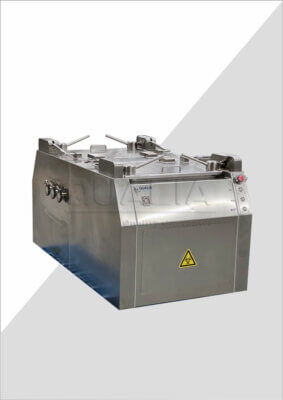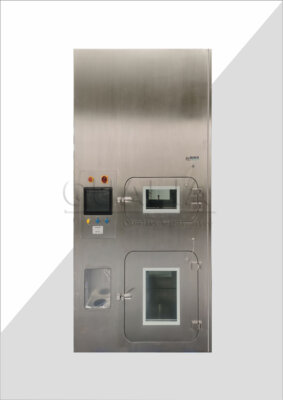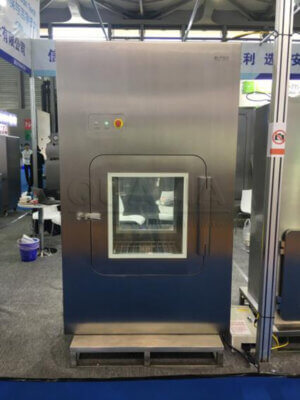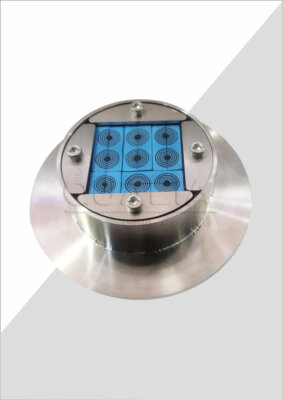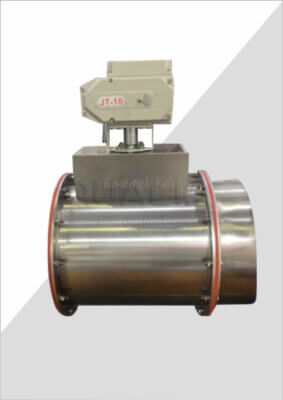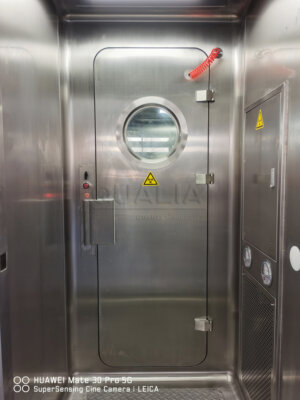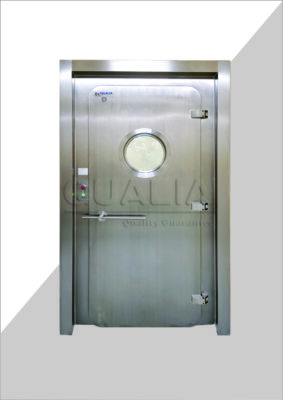In the ever-evolving landscape of scientific research, mobile Biosafety Level 3 (BSL-3) and Biosafety Level 4 (BSL-4) module laboratories have emerged as critical assets in the fight against infectious diseases and global health threats. These cutting-edge facilities combine the highest levels of biosafety with the flexibility of mobile units, allowing researchers to respond rapidly to outbreaks and conduct vital studies in remote locations. At the heart of these advanced laboratories lies a sophisticated network of connectivity and data management systems, enabling seamless communication, real-time monitoring, and efficient data analysis.
The integration of state-of-the-art connectivity and data management solutions in mobile BSL-3/BSL-4 module labs has revolutionized the way scientists work with hazardous pathogens. From secure wireless networks to cloud-based data storage, these technologies enhance safety protocols, streamline workflows, and facilitate collaborative research across geographical boundaries. As we delve into the intricacies of these systems, we'll explore how they're shaping the future of high-containment research and contributing to global health security.
As we transition into the main content of this article, it's important to recognize the pivotal role that connectivity and data management play in the operation of mobile BSL-3/BSL-4 module labs. These technologies not only ensure the safety of researchers and the surrounding environment but also maximize the efficiency and effectiveness of critical scientific work. Let's examine the key components and innovations that make these mobile laboratories true marvels of modern science.
Mobile BSL-3/BSL-4 module laboratories represent the pinnacle of biosafety and technological integration, offering unparalleled flexibility and security for high-risk pathogen research in diverse environments.
Before we dive into the specific aspects of connectivity and data management in mobile BSL labs, let's take a look at an overview of the key technologies involved:
| Technology | Function | Impact on Lab Operations |
|---|---|---|
| Wireless Networks | Secure data transmission | Enables real-time communication and monitoring |
| Cloud Computing | Remote data storage and processing | Facilitates collaborative research and data analysis |
| IoT Sensors | Environmental and equipment monitoring | Enhances safety and efficiency through automated alerts |
| Biometric Access Control | Secure entry and user authentication | Strengthens biosecurity measures |
| RFID Tracking | Inventory and sample management | Improves traceability and reduces human error |
| AI-powered Analysis | Data interpretation and predictive maintenance | Accelerates research outcomes and prevents equipment failures |
How are secure wireless networks implemented in mobile BSL labs?
The foundation of connectivity in mobile BSL-3/BSL-4 module labs is a robust and secure wireless network. These networks are designed to withstand the unique challenges posed by high-containment environments while providing researchers with the connectivity they need to perform their critical work.
Implementing secure wireless networks in mobile BSL labs involves a multi-layered approach to ensure data integrity and prevent unauthorized access. Advanced encryption protocols, such as WPA3, are employed to protect sensitive information transmitted within the lab. Additionally, network segmentation techniques are used to isolate different areas of the lab, further enhancing security.
One of the key challenges in setting up wireless networks in BSL labs is maintaining signal strength through thick containment walls and specialized air handling systems. To overcome this, strategically placed access points and signal boosters are installed throughout the module, ensuring comprehensive coverage without compromising the lab's structural integrity.
Secure wireless networks in mobile BSL-3/BSL-4 module labs utilize military-grade encryption and are designed to maintain connectivity even in the most challenging environments, ensuring uninterrupted access to critical data and communication channels.
| Network Security Feature | Purpose | Implementation |
|---|---|---|
| Encryption | Data protection | WPA3 protocol |
| Segmentation | Isolation of lab areas | VLAN configuration |
| Access Control | User authentication | 802.1X standard |
| Intrusion Detection | Threat monitoring | AI-powered systems |
What role does cloud computing play in data management for mobile BSL labs?
Cloud computing has revolutionized data management in mobile BSL-3/BSL-4 module labs, offering unprecedented storage capacity, processing power, and accessibility. By leveraging cloud technologies, researchers can securely store vast amounts of data off-site, reducing the physical storage requirements within the confined space of a mobile lab.
The integration of cloud computing in mobile BSL labs extends beyond mere storage. It enables real-time data analysis, collaborative research across multiple sites, and the ability to access historical data instantly. This capability is particularly crucial when tracking the progression of experiments or comparing results from different locations.
Security remains paramount when utilizing cloud services in high-containment environments. Mobile BSL labs employ dedicated, private cloud infrastructures with multiple layers of security, including end-to-end encryption, multi-factor authentication, and strict access controls. These measures ensure that sensitive research data remains protected while still being accessible to authorized personnel.
Cloud computing in mobile BSL-3/BSL-4 module labs facilitates global collaboration and accelerates research outcomes by providing secure, scalable data storage and processing capabilities that can be accessed from anywhere in the world.
| Cloud Feature | Benefit | Application in BSL Labs |
|---|---|---|
| Scalable Storage | Unlimited data capacity | Long-term experiment tracking |
| Remote Access | Global collaboration | Multi-site research projects |
| Data Analytics | Rapid insights | Real-time pathogen analysis |
| Disaster Recovery | Data protection | Backup of critical research findings |
How do IoT sensors enhance safety and monitoring in mobile BSL environments?
The Internet of Things (IoT) has found a critical application in mobile BSL-3/BSL-4 module labs, where a network of smart sensors continuously monitors various aspects of the laboratory environment. These sensors play a crucial role in maintaining biosafety by tracking parameters such as air pressure differentials, temperature, humidity, and the presence of airborne particles.
IoT sensors in mobile BSL labs are designed to be highly sensitive and resistant to the harsh decontamination procedures used in these environments. They provide real-time data on environmental conditions, equipment status, and even the location of personnel within the lab. This constant stream of information allows for immediate detection of any deviations from safety protocols or potential equipment failures.
One of the most significant advantages of IoT sensors in mobile BSL labs is their ability to trigger automated responses to potential hazards. For example, if a sensor detects a drop in air pressure that could compromise containment, it can automatically activate backup systems and alert staff both inside and outside the lab. This rapid response capability significantly enhances the overall safety of the facility.
IoT sensors in mobile BSL-3/BSL-4 module labs create a digital nervous system that continuously monitors and responds to environmental changes, dramatically improving safety and efficiency in high-risk research environments.
| Sensor Type | Monitored Parameter | Safety Impact |
|---|---|---|
| Pressure Sensors | Air pressure differentials | Maintain containment integrity |
| HEPA Filter Sensors | Air quality and filtration | Prevent pathogen escape |
| Motion Sensors | Personnel movement | Track researcher locations |
| Equipment Sensors | Freezer temperatures, centrifuge speeds | Ensure sample integrity |
What biometric systems are used for access control in mobile BSL labs?
Biometric access control systems are an integral part of the security infrastructure in mobile BSL-3/BSL-4 module labs. These advanced systems go beyond traditional key cards or PIN codes, utilizing unique biological characteristics to verify the identity of personnel entering and exiting the lab.
The most common biometric technologies employed in mobile BSL labs include fingerprint scanners, retinal scanners, and facial recognition systems. These are often used in combination to create multi-factor authentication protocols, significantly reducing the risk of unauthorized access. The choice of biometric system often depends on the specific requirements of the lab and the level of biosafety containment.
Implementing biometric systems in mobile BSL labs presents unique challenges due to the need for personnel to wear personal protective equipment (PPE). To address this, some labs use hand geometry scanners that can function even when researchers are wearing thick gloves. Others employ voice recognition systems that can identify individuals through protective suits and respirators.
Biometric access control systems in mobile BSL-3/BSL-4 module labs provide an unparalleled level of security, ensuring that only authorized and properly trained personnel can enter high-containment areas while maintaining a detailed log of all lab access.
| Biometric Method | Advantages | Challenges in BSL Labs |
|---|---|---|
| Fingerprint Scanning | High accuracy, fast recognition | May be affected by gloves |
| Retinal Scanning | Extremely secure, contactless | Requires removal of eye protection |
| Facial Recognition | Works with some PPE, non-invasive | May be affected by full-face respirators |
| Voice Recognition | Functions through protective suits | Potential for background noise interference |
How is RFID technology utilized for inventory and sample management?
Radio-Frequency Identification (RFID) technology has become an indispensable tool for inventory and sample management in mobile BSL-3/BSL-4 module labs. This technology allows for the real-time tracking of equipment, supplies, and biological samples, enhancing both efficiency and biosecurity.
RFID tags attached to lab items emit unique radio signals that can be detected by readers placed throughout the lab. This system enables automated inventory tracking, reducing the need for manual counts and minimizing the risk of human error. For biological samples, RFID technology provides a reliable method to monitor the location, temperature, and movement of potentially hazardous materials.
One of the key advantages of RFID in mobile BSL labs is its ability to function without line-of-sight, unlike barcode systems. This means that samples can be tracked even when stored in containment units or freezers. Additionally, RFID systems can be integrated with lab management software to provide real-time updates on inventory levels, expiration dates, and usage patterns.
RFID technology in mobile BSL-3/BSL-4 module labs creates a digital inventory system that enhances biosecurity, improves operational efficiency, and provides an unbroken chain of custody for high-risk biological samples.
| RFID Application | Benefit | Implementation in BSL Labs |
|---|---|---|
| Sample Tracking | Improved chain of custody | RFID-enabled sample containers |
| Equipment Monitoring | Prevent loss and misuse | RFID tags on lab equipment |
| Inventory Management | Automated stock control | RFID-tagged consumables |
| Access Control | Enhanced security | RFID-enabled PPE and badges |
What role does AI play in data analysis and predictive maintenance?
Artificial Intelligence (AI) is revolutionizing data analysis and maintenance procedures in mobile BSL-3/BSL-4 module labs. These advanced algorithms process vast amounts of data generated by lab equipment, environmental sensors, and research outputs to provide valuable insights and predict potential issues before they occur.
In the realm of data analysis, AI systems can rapidly sift through complex datasets, identifying patterns and correlations that might be missed by human researchers. This capability is particularly valuable in genomic studies and epidemiological research, where AI can accelerate the process of identifying potential drug targets or tracking the spread of pathogens.
Predictive maintenance is another critical application of AI in mobile BSL labs. By analyzing data from equipment sensors, AI algorithms can detect subtle changes that may indicate impending failures. This proactive approach to maintenance helps prevent costly downtime and potential biosafety risks associated with equipment malfunctions.
AI-powered systems in mobile BSL-3/BSL-4 module labs act as tireless digital assistants, continuously analyzing data to uncover research insights and predicting equipment maintenance needs, thereby enhancing both scientific productivity and operational safety.
| AI Application | Function | Impact on Lab Operations |
|---|---|---|
| Data Analysis | Pattern recognition in research data | Accelerated discovery process |
| Predictive Maintenance | Equipment failure prediction | Reduced downtime and safety risks |
| Workflow Optimization | Process efficiency analysis | Improved resource allocation |
| Anomaly Detection | Identification of unusual data patterns | Enhanced biosafety monitoring |
How do mobile BSL labs ensure data integrity and cybersecurity?
Ensuring data integrity and maintaining robust cybersecurity measures are paramount in mobile BSL-3/BSL-4 module labs, where the sensitivity of research data and the potential risks associated with breaches are exceptionally high. These labs employ a multi-layered approach to protect against both internal and external threats.
Data integrity in mobile BSL labs is maintained through rigorous validation processes, checksums, and blockchain-like technologies that create immutable records of all data transactions. This ensures that research data remains unaltered and traceable from the point of collection through analysis and storage.
Cybersecurity measures in these labs go beyond standard firewalls and antivirus software. Advanced intrusion detection systems, air-gapped networks for critical systems, and regular penetration testing are all part of the comprehensive security strategy. Additionally, all data transmissions, both within the lab and to external networks, are protected by military-grade encryption protocols.
Mobile BSL-3/BSL-4 module labs implement cybersecurity measures that rival those of national security agencies, ensuring that critical research data remains protected from unauthorized access or manipulation while maintaining its scientific integrity.
| Security Measure | Purpose | Implementation in BSL Labs |
|---|---|---|
| Data Encryption | Protect data in transit and at rest | End-to-end encryption protocols |
| Access Logging | Track all data interactions | Blockchain-inspired audit trails |
| Network Segmentation | Isolate critical systems | Air-gapped networks for sensitive data |
| Threat Intelligence | Proactive security updates | AI-powered threat detection systems |
Conclusion
The integration of advanced connectivity and data management systems in mobile BSL-3/BSL-4 module labs represents a significant leap forward in the field of high-containment research. These technologies not only enhance the safety and efficiency of laboratory operations but also open new avenues for scientific discovery and global collaboration.
From secure wireless networks that maintain communication in the most challenging environments to cloud computing platforms that enable real-time data analysis across continents, these innovations are transforming how we approach the study of dangerous pathogens. IoT sensors create a digital ecosystem that constantly monitors and responds to environmental changes, while biometric systems and RFID technology ensure unparalleled security and traceability.
The role of AI in these advanced laboratories cannot be overstated. By rapidly analyzing complex datasets and predicting maintenance needs, AI systems are becoming indispensable partners to human researchers, accelerating the pace of scientific discovery while maintaining the highest standards of safety.
As we look to the future, the continued development of these technologies promises even greater advancements in mobile BSL lab capabilities. The ability to rapidly deploy these high-tech facilities to outbreak zones or remote research sites will play a crucial role in our global response to emerging infectious diseases and other biological threats.
QUALIA is at the forefront of this technological revolution, offering state-of-the-art Mobile BSL-3/BSL-4 Module Laboratory solutions that incorporate the latest in connectivity and data management systems. These advanced mobile labs exemplify the perfect synergy between cutting-edge technology and rigorous biosafety standards, enabling researchers to push the boundaries of scientific knowledge while ensuring the utmost protection for personnel and the environment.
In conclusion, the sophisticated connectivity and data management systems employed in mobile BSL-3/BSL-4 module labs are not just tools, but integral components of a new era in infectious disease research. They represent our best defense against global health threats and our greatest hope for rapid scientific advancement in the face of emerging challenges.
External Resources
Using Modern Technology Within Instruments to Benefit Biosafety Level 4 Labs – This article discusses the benefits of integrating modern technologies like cloud computing and Bluetooth in BSL-4 lab equipment for enhanced data management and connectivity.
Communication and Computing Technology in Biocontainment Laboratories – This resource details the implementation of wireless VoIP networks and wearable communication devices in BSL-3 and BSL-4 laboratories, highlighting improvements in staff communication and workflow efficiency.
Biosafety in Microbiological and Biomedical Laboratories (BMBL) 6th Edition – The CDC's comprehensive guide on biosafety practices, including sections on laboratory design and safety equipment relevant to BSL-3 and BSL-4 facilities.
Smart Labs: The Future of Research Facilities – This article explores the concept of smart labs, discussing how IoT, AI, and other advanced technologies are being integrated into research facilities to improve efficiency and data management.
WHO Laboratory Biosafety Manual – 4th Edition – The World Health Organization's manual provides guidelines on biosafety practices, including recommendations for laboratory design and equipment that support safe and efficient operations.
Internet of Things (IoT) for Lab Connectivity – This resource discusses the application of IoT in laboratory settings, including its potential for improving connectivity and data management in high-containment labs.
Related Contents:
- High-Tech Integration in Mobile BSL-3/BSL-4 Labs
- Advancing Biosafety: Mobile BSL-3/BSL-4 Module Laboratories
- Revolutionizing Containment: Mobile BSL-3/BSL-4 Module Labs
- Unveiling Mobile BSL-3 and BSL-4 Lab Differences
- Environmental control systems play a crucial role in ensuring the safety and efficacy of mobile BSL-3 and BSL-4 module laboratories. These sophisticated containment facilities are designed to handle highly infectious agents and require stringent environmental controls to protect researchers and prevent the release of hazardous materials. As the demand for mobile high-containment laboratories grows, understanding the intricacies of their environmental control systems becomes increasingly important.
- Customizing Mobile BSL-3/BSL-4 Labs for Advanced Biosafety
- Cutting-Edge Waste Management for Mobile BSL-3/BSL-4 Labs
- Mobile BSL-3/BSL-4 Module Labs: A Cost-Effective Alternative
- The Future of Portable High-Containment Labs


